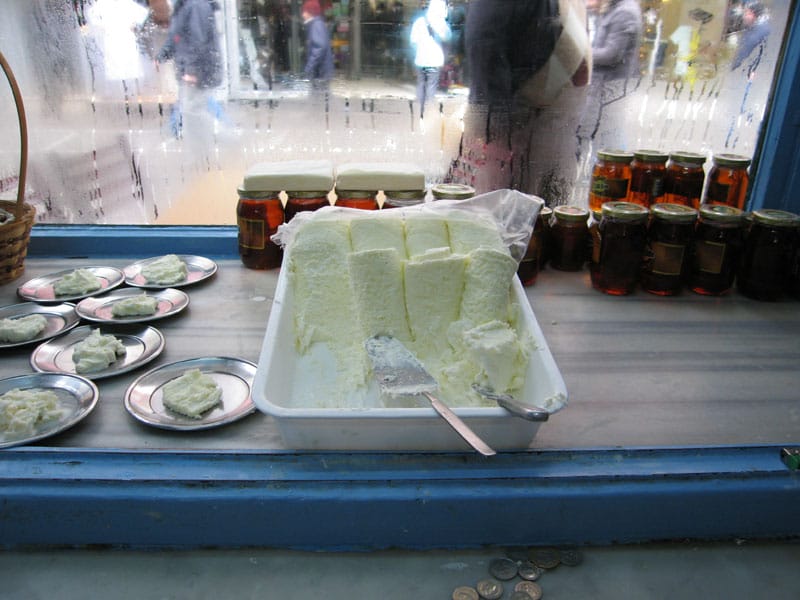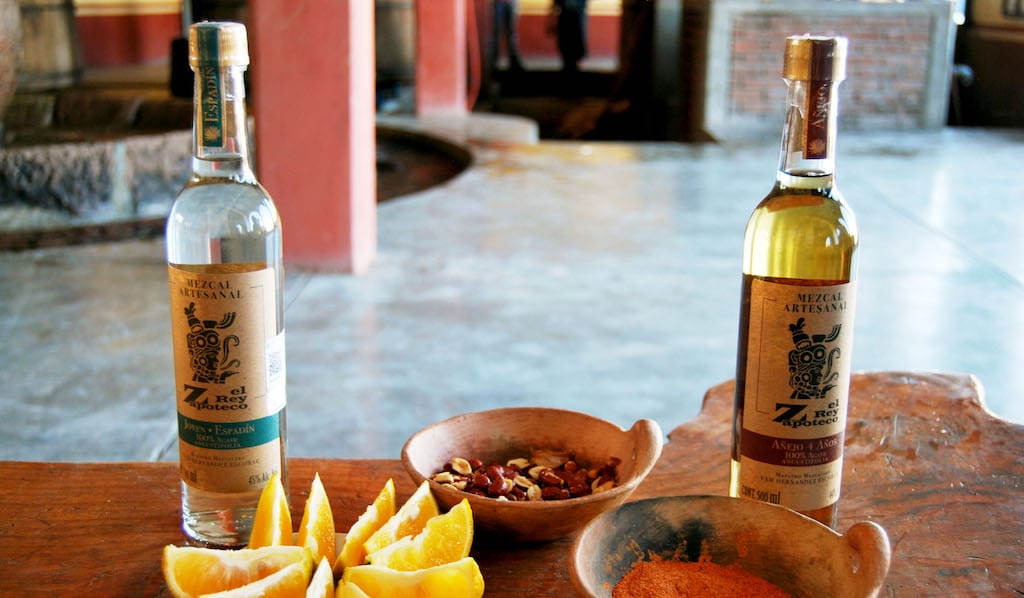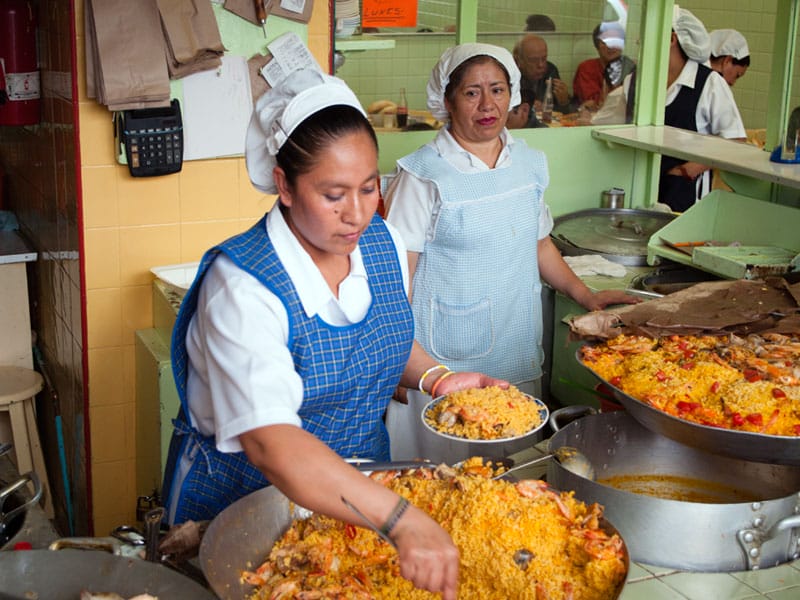Editor’s note: We are profoundly sad to report that Beşiktaş Kaymakçı has closed.
In our imagination, kaymak – the delicious Turkish version of clotted cream – is the only food served in heaven, where angels in white robes dish out plate after plate of the cloudlike stuff to the dearly departed, who no longer have to worry about cholesterol counts and visits to the cardiologist.
Perhaps we’re getting carried away, but kaymak can do that to you. For our money, the classic Turkish combo of kaymak served with honey and crusty white bread is one of the finest breakfasts anywhere.
The stuff is glorious, but simple. Milk – preferably from domesticated water buffaloes, known as “manda” in Turkish – is slowly boiled until a thick layer of very rich, pure, white cream forms at the top. After it cools, the kaymak is rolled up into little logs that have a consistency that hovers somewhere in between liquid and solid, with a creamy taste that’s both subtle and rich at the same time.
The stuff is also quite delicate, with a shelf life of barely one day. Still, purists refuse to refrigerate it, lest it lose its texture and pick up any refrigerator odors. Like we said, kaymak can make people get carried away.
Two of our favorite places to try kaymak are:
Beşiktaş Kaymakçı – This tiny shop/eatery has been in business since 1895, and it certainly shows its age. The marble counter is cracked and the paint on the walls peeling. But the kaymak, served up by the 84-year-old Pando, a living institution in Istanbul’s untouristed Beşiktaş bazaar, is out of this world. Prices here also seem unchanged since 1895: a plate of kaymak and honey, served with fresh bread and a glass of steaming hot milk, will set you back 4 lira.
Karaköy Özsüt – Compared to Pando in Beşiktaş, this place – open since 1915 – is a relative newcomer to the kaymak scene. Located on Istiklal Caddesi, Özsüt also serves up very good kaymak (as well as yogurt and rustic cheeses) made from the restaurant’s own herd of water buffaloes, whose pictures grace the walls.
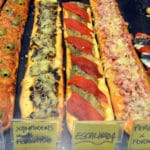 May 19, 2015 Coca de Recapte
May 19, 2015 Coca de Recapte
Coca is a word used in Catalonia and neighboring regions for many kinds of baked doughs […] Posted in Barcelona August 3, 2021 El Rey Zapoteco
August 3, 2021 El Rey Zapoteco
“When you like what you do, and you're young, nothing is impossible,” says Doña Juanita […] Posted in Oaxaca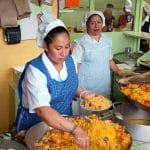 July 29, 2013 Gran Cocina Mi Fonda
July 29, 2013 Gran Cocina Mi Fonda
In recent years, downtown Mexico City’s once grimy Centro Histórico has undergone a […] Posted in Mexico City
Published on May 20, 2014
Related stories
May 19, 2015
BarcelonaCoca is a word used in Catalonia and neighboring regions for many kinds of baked doughs and pastries, both sweet and savory. The Catalan and Occitan word has the same root as “cake” and comes from the Dutch word kok, which entered the local lexicon during the reign of the Carolingians in Catalonia (759-809). Because…
August 3, 2021
Oaxaca“When you like what you do, and you're young, nothing is impossible,” says Doña Juanita Hernandez, one of a handful of female master distillers in Oaxaca, the heart of Mexico’s small-scale mezcal industry. She sits, tiny and relaxed on a wooden bench as we sip mezcal in her distillery, El Rey Zapoteco, in the Oaxacan…
July 29, 2013
Mexico CityIn recent years, downtown Mexico City’s once grimy Centro Histórico has undergone a remarkable transformation. The government and private enterprises have invested in new infrastructure, pedestrian walkways, parks, hotels and high-end apartment buildings that give the area the look and feel of a district that is part of a modern, dynamic capital city. Yet no…







































